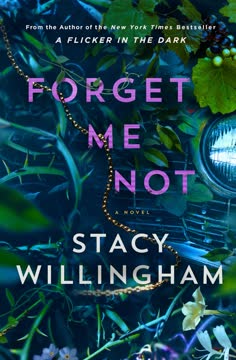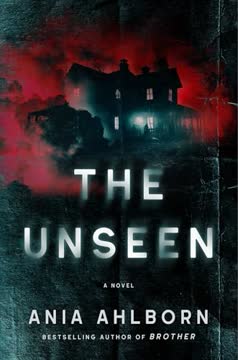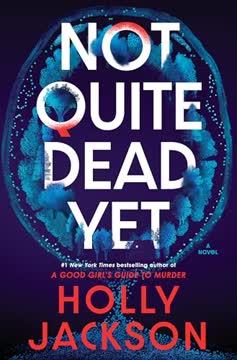Plot Summary
Voluntary Repossession
Beatrice, recently unemployed and abandoned by her boyfriend Reilly, faces mounting financial ruin. She voluntarily surrenders her car to avoid the humiliation of repossession, then returns to her nearly empty apartment, where Reilly collects his things. With no friends or family willing to help, Beatrice's sense of isolation deepens. Her father's harsh voicemail underscores her lack of support. Desperate and on the verge of homelessness, she meets Talia, a seemingly kind stranger who offers her a job and a glimmer of hope. This encounter, fueled by Beatrice's vulnerability, sets the stage for her abduction and the harrowing ordeal to come.
Talia's Offer
Talia, with her posh accent and gold jewelry, finds Beatrice outside a coffee shop after she's been shamed for using the Wi-Fi without buying anything. Talia listens to Beatrice's woes, buys her coffee, and offers her a job. Grateful for the attention and the promise of work, Beatrice accepts, unaware that her drink is drugged. She wakes up in a strange, well-furnished room, disoriented and without her belongings. The kindness that seemed like salvation is revealed as a trap, and Beatrice realizes she's been kidnapped for a purpose she doesn't yet understand.
The Locked Room
Awakening in a locked, barred room, Beatrice is confronted by Isabel, her cold and pragmatic jailer. Isabel lays out the rules: Beatrice is to be a nanny for children brought to the house by mysterious, dangerous people known only as "They." Any disobedience will be met with violence or death. The house is isolated, escape seems impossible, and Beatrice's attempts to resist are met with a Taser and threats. The psychological terror of her situation sets in, as she realizes her survival depends on obedience and navigating the unpredictable moods of her captors.
Rules and Routines
Over days, Beatrice learns the strict rules of her new life: always be visible when Isabel enters, never hold anything that could be a weapon, and never try to escape. She's given access to the second floor, which includes her room, a classroom, and a dining area. The windows are barred, the doors reinforced, and a single security camera watches the stairwell. Beatrice marks the days in a hidden book, clings to small comforts, and tries to maintain her sanity. The monotony and fear are broken only by the threat of violence and the hope that, if she obeys, she might survive.
Nestor Arrives
The arrival of Nestor, a young Venezuelan boy, stuffed into a duffel bag and covered in blood, shatters Beatrice's isolation. She becomes his caretaker, learning he witnessed the murder of his protectors and was kidnapped for ransom. Their days settle into a routine of lessons, games, and attempts at normalcy, but both are haunted by nightmares. Beatrice's role shifts from mere survival to protecting and nurturing Nestor, forging a bond that gives her purpose but also deepens her fear of what might happen to him—or to herself—if she fails.
Proof of Life
Nestor's father, a Venezuelan government minister, is forced to speak to his son via video call, providing proof of life to the kidnappers. The calls are orchestrated with chilling efficiency, and Beatrice is forced to remain silent and invisible. The ransom is not money, but political leverage—Nestor's captivity is a tool to manipulate his father's actions. The emotional toll on Nestor is immense, and Beatrice must comfort him while hiding her own terror. The calls underscore the powerlessness of both captives and the moral bankruptcy of those who profit from their suffering.
Surviving Captivity
As months pass, Beatrice becomes both teacher and surrogate parent to Nestor. She creates a curriculum, teaches him languages, and tries to instill hope. Their world shrinks to the routines of meals, lessons, and the rare, precious moments of play. The psychological effects of captivity—depression, anxiety, and the constant threat of violence—are ever-present. Beatrice's memories of her own childhood traumas resurface, fueling her determination to protect Nestor at all costs. The outside world fades, replaced by the relentless demands of survival and the fragile bonds of found family.
Summer Yard Time
After months of negotiation, Beatrice and Nestor are allowed outside into the fenced backyard. The taste of fresh air and sunlight is intoxicating, a brief reprieve from confinement. They play, invent games, and meet Aiden, the groundskeeper—a young man who, like them, is not truly free. The boundaries of captivity are reinforced by the ever-present fence and the knowledge that escape is still impossible. Yet, the yard becomes a symbol of hope and resilience, a place where Beatrice and Nestor can reclaim a piece of their stolen childhoods.
Failed Escape
When Nestor falls ill and Beatrice's pleas for medical help are ignored, she seizes a rare opportunity to pass a note to a visiting dentist. The attempt fails—Isabel intercepts the note, and Beatrice is brutally punished. The consequences are both physical and psychological: she is stripped, beaten, and reminded of her utter powerlessness. The failed escape cements her understanding that no one in the house—not even the visiting professionals—will help them. The experience hardens Beatrice, teaching her that survival may require violence and that hope is a dangerous luxury.
The Dentist's Visit
The arrival of a dentist to treat Nestor's abscessed tooth offers a fleeting hope of rescue. Beatrice risks everything to pass a note, but the dentist is complicit, and Isabel's retribution is swift and humiliating. The episode exposes the depth of the organization's reach and the futility of seeking help from outsiders. Beatrice's punishment is both a warning and a lesson: trust no one, and never underestimate the cruelty of those in power. The incident marks a turning point, as Beatrice begins to contemplate more drastic measures for escape.
Minu's Fate
The arrival of Minu, a toddler from an unknown country, brings new challenges and heartbreak. Beatrice cares for her as best she can, but when Minu's family fails to meet the kidnappers' demands, the girl is executed in front of the house. Beatrice's attempt to save her ends in violence and guilt. The murder devastates everyone, especially Nestor and Sadiq, and exposes the utter depravity of their captors. The trauma cements Beatrice's resolve: survival is no longer enough—she must find a way to fight back, even if it means becoming a killer herself.
New Arrivals
Over time, more children arrive—Sadiq, a Saudi prince, and later Jackie and her caretaker Lixue from China. Each new arrival brings fresh trauma, new languages, and shifting alliances. Beatrice becomes the center of a makeshift family, juggling the needs and fears of children from around the world. The captors' indifference to the children's suffering is matched only by their bureaucratic efficiency. The group's survival depends on Beatrice's ability to adapt, teach, and protect, even as the threat of violence looms ever closer.
Sadiq's Resistance
Sadiq, older and more defiant than the others, resists Beatrice's authority and the captors' rules. His bravado masks deep fear and trauma, but it also inspires Beatrice to challenge her own resignation. The children's relationships are fraught—alliances form and dissolve, and the constant threat of violence keeps everyone on edge. Sadiq's resistance becomes a catalyst for Beatrice, pushing her to consider escape not just as a dream, but as a necessity. The group's dynamic shifts, and the possibility of collective action begins to take shape.
Christmas in Captivity
Against Isabel's wishes, Beatrice orchestrates a clandestine Christmas for the children, complete with gifts, games, and a sense of normalcy. The celebration is a rare moment of happiness, a reminder of life before captivity. Aiden, the groundskeeper, becomes more involved, and his relationship with Beatrice deepens. The holiday is bittersweet, underscoring both the resilience of the captives and the cruelty of their situation. The brief joy is a balm, but it cannot erase the trauma or the ever-present danger.
Aiden's Confession
Beatrice and Aiden's relationship becomes intimate, built on shared trauma and mutual need. Aiden reveals his own history as a victim of the organization, kidnapped as a child and forced into complicity. Their bond offers comfort but also complicates the moral landscape—Aiden is both jailer and fellow prisoner. The lines between love, survival, and betrayal blur. Beatrice must decide whether to trust him, and whether their connection can be a path to freedom or just another form of captivity.
Isabel's Story
After a brutal punishment, Isabel confides her own history of abduction, abuse, and complicity. Her story is one of survival at any cost, and her transformation from victim to perpetrator is both horrifying and pitiable. Beatrice sees in Isabel a possible future for herself—a warning of what happens when survival eclipses humanity. The revelation deepens Beatrice's understanding of the system that holds them all captive and steels her resolve to break the cycle, even if it means violence.
The Breaking Point
When Gustav, the most sadistic of the goons, is given control of the house, Beatrice realizes that compliance is no longer enough. The threat to herself and the children is immediate and absolute. In a moment of clarity and terror, she kills Gustav and Lazlo, then confronts Isabel. The violence is shocking but necessary—a final rejection of victimhood. Beatrice gathers the children, and together they make their escape, leaving behind a house of horrors and the bodies of their tormentors.
The Final Escape
Beatrice, Sadiq, and Jackie flee through the Canadian wilderness, pursued by the threat of recapture. They reach Calgary, where Beatrice seeks help at the American consulate. The children are eventually reunited with their families, but Beatrice faces interrogation, suspicion, and the burden of her actions. The trauma of captivity lingers, and the world outside is both alien and dangerous. Beatrice must navigate bureaucracy, secrecy, and the fear that the organization may still be hunting her.
Freedom and Fallout
Beatrice is given a new identity and sent to live with her stepmother Cynthia in San Diego. Haunted by nightmares and hypervigilance, she struggles to rebuild her life. She finds solace in routine, work, and the tentative connections she maintains with Sadiq and Jackie. The return of Aiden—now Bernest—offers a chance at love and understanding, but also the risk of exposure and further trauma. The story ends with Beatrice choosing hope and connection, even as the scars of captivity remain.
Characters
Beatrice Meadows
Beatrice is a young woman whose life unravels after job loss and abandonment. Her vulnerability makes her an easy target for abduction, but her intelligence, empathy, and adaptability become her greatest assets in captivity. Forced into the role of nanny and teacher for a rotating cast of kidnapped children, Beatrice's sense of responsibility grows, even as her own trauma deepens. She is haunted by guilt, especially after the deaths of Minu and others, but her capacity for love and her refusal to become as hardened as her captors drive her to risk everything for escape. Her psychological journey is one from helplessness to agency, from victim to avenger, and finally to a fragile hope for healing.
Isabel ("Britney")
Isabel is Beatrice's primary captor, a woman whose own abduction and abuse as a teenager led her to become both victim and perpetrator. She enforces the rules with cold efficiency, wielding violence and psychological manipulation. Her cynicism masks deep wounds, and her eventual confession reveals the cost of survival in a world where compassion is a liability. Isabel's relationship with Beatrice is complex—part adversary, part reluctant mentor, and ultimately a cautionary tale. Her decline and death mark the end of one era of captivity and the beginning of Beatrice's transformation.
Aiden ("Bernest")
Aiden is the groundskeeper, a young man who, like Beatrice, was kidnapped as a child and forced into the organization's service. His charm and kindness mask deep trauma and a learned helplessness. He becomes Beatrice's confidant, lover, and, at times, her only source of hope. Their relationship is fraught with power imbalances and the ever-present threat of betrayal. Aiden's struggle to reclaim agency and his eventual choice to help Beatrice escape (and later, to seek her out) reflect the possibility of redemption, even for those complicit in evil.
Nestor
Nestor is a young Venezuelan boy kidnapped for political leverage. Traumatized by violence and separated from his family, he becomes the center of Beatrice's world. Their bond is maternal and fierce, and his presence gives her purpose. Nestor's eventual release is bittersweet—he is saved, but the scars of captivity remain for both him and Beatrice. His story underscores the collateral damage of adult machinations and the resilience of children in the face of horror.
Sadiq
Sadiq, a Saudi prince, arrives older and more rebellious than the other children. His bravado and resistance challenge Beatrice's authority and the captors' control. Beneath his tough exterior lies deep fear and vulnerability. Sadiq's journey from resistance to cooperation mirrors Beatrice's own struggle with agency. His presence pushes the group toward collective action and, ultimately, escape.
Jackie
Jackie, a young Chinese girl, arrives with her caretaker Lixue. Her intelligence and adaptability help her survive, but the murder of Lixue leaves her deeply scarred. Jackie's relationship with Beatrice is one of trust and dependence, and her gradual recovery is a testament to the power of care and connection. Her story highlights the global reach of the trafficking organization and the universality of childhood innocence under threat.
Gustav
Gustav is one of the primary enforcers, a man who delights in cruelty and uses his position to terrorize the captives. His presence escalates the danger, and his eventual murder at Beatrice's hands is both a moment of liberation and a point of no return. Gustav represents the banality of evil—the ordinary man made monstrous by power and impunity.
Lazlo
Lazlo is another goon, less overtly cruel than Gustav but equally complicit in the system's violence. His indifference and willingness to look the other way make him dangerous in a different way. His death is necessary for the group's escape, and his character serves as a reminder that passivity in the face of evil is itself a crime.
Minu
Minu, a toddler from an unknown country, is the most vulnerable of the captives. Her brief presence and brutal murder are a turning point for Beatrice and the others, shattering any remaining illusions about the possibility of mercy or negotiation. Minu's death is the catalyst for Beatrice's transformation from survivor to fighter.
Talia
Talia is the woman who lures Beatrice into captivity with promises of help and kindness. Her role is brief but pivotal—she represents the seductive face of evil, the way predators exploit vulnerability. Talia's disappearance after Beatrice's abduction underscores the disposability of those who serve the organization's ends.
Plot Devices
Captivity as psychological crucible
The narrative structure is built around the claustrophobic routines of captivity, with each new rule, punishment, and arrival ratcheting up the tension. The house itself is a character—barred, locked, and surveilled, it becomes both prison and battleground. Foreshadowing is woven through Beatrice's memories and the incremental escalation of violence, preparing the reader for the eventual necessity of murder. The use of shifting alliances, unreliable narrators, and the gradual revelation of each character's backstory deepens the psychological complexity. The story's emotional arc is driven by the interplay of hope and despair, culminating in the explosive violence of the escape and the ambiguous freedom that follows.
Analysis
"Nobody Knows You're Here" is a harrowing exploration of captivity, trauma, and the limits of survival. Bryn Greenwood crafts a narrative that is both a thriller and a psychological study, interrogating the ways in which systems of power exploit vulnerability and perpetuate cycles of abuse. The novel's greatest strength lies in its refusal to offer easy answers or tidy resolutions—freedom, when it comes, is fraught with guilt, loss, and the lingering effects of violence. The story challenges readers to consider the cost of survival: what must be sacrificed, what lines must be crossed, and whether healing is truly possible. Through Beatrice's journey, the novel examines the corrosive effects of complicity, the redemptive power of connection, and the necessity of reclaiming agency, even in the face of overwhelming odds. Ultimately, it is a testament to the resilience of the human spirit and a call to bear witness to those who are missing, forgotten, or unseen.
Last updated:
Review Summary
Nobody Knows You're Here is a dark, intense psychological thriller that has deeply impacted readers. Many describe it as haunting, emotionally charged, and difficult to put down. The story follows a kidnapped woman forced to care for trafficked children, exploring themes of survival, trauma, and complex relationships. Reviewers praise Greenwood's immersive writing style and character development, though warn about heavy subject matter. Most rate it highly, calling it unforgettable and thought-provoking. The book's exploration of moral ambiguity and resilience in the face of horror has left a lasting impression on many readers.















